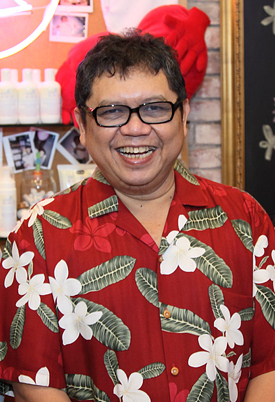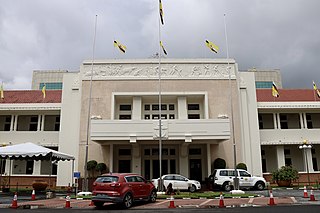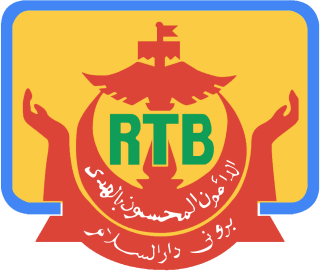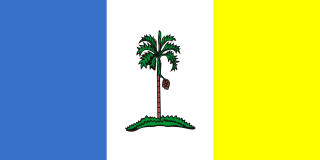The New Straits Times is an English-language newspaper published in Malaysia. It is Malaysia's oldest newspaper still in print, having been founded as a local offshoot of Singapore-based The Straits Times on 15 July 1845. It was renamed as the New Straits Times on 13 August 1974.

The Malay Mail was a newspaper in Kuala Lumpur, Malaysia, first published on 1 December 1896 when Kuala Lumpur was the capital of the then new Federated Malay States, making it the first daily newspaper to appear in the FMS. In December 2018, it ceased printing after 122 years but has continued as a news portal.

Dato' Mohammad Nor bin Mohammad Khalid, more commonly known as Lat, is a Malaysian cartoonist. Winner of the Fukuoka Asian Culture Prize in 2002, Lat has published more than 20 volumes of cartoons since he was 13 years old. His works mostly illustrate Malaysia's social and political scenes, portraying them in a comedic light without bias. Lat's best known work is The Kampung Boy (1979), which has been published in several countries across the world. In 1994, the Sultan of Perak bestowed him the honorific title of datuk, in recognition of the cartoonist's work in helping to promote social harmony and understanding through his cartoons. Lat also works for the government to improve the city's social security.

BH is a Malay-language daily newspaper published in Malaysia. It is owned by the New Straits Times Press. BH was first published on 1 July 1957, marking its debut as the inaugural mainstream newspaper in Malaysia. Its Sunday Edition, BH Ahad, was launched on 10 July 1960.

The Malaysian National News Agency, is a news agency of the government of Malaysia. It is an autonomous body under the Ministry of Communications and Digital. Headquartered at the Wisma Bernama, off Jalan Tun Razak near National Library, Kuala Lumpur, it was created by an Act of Parliament in 1967 and began operating on 20 May 1968.

RTM TV1 is a Malaysian free-to-air public television channel owned and operated by Radio Televisyen Malaysia, a broadcasting department of the Malaysian Government. Launched on 28 December 1963, TV1 is the first and oldest TV station in Malaysia. The channel features mostly news, talk shows and documentaries and some in-house, local and international kids, drama and sports programming.

Sistem Televisyen Malaysia Berhad, operating as TV3, is a Malaysian free-to-air television channel owned by Malaysian media conglomerate, Media Prima. TV3 is the third oldest TV station in Malaysia. It was launched on 1 June 1984 as the country's first and oldest private television channel. As of October 2021, TV3 remains to be the most-watched television station in Malaysia with about 17% of its viewing share among other Malaysian television stations, followed by TV9 with 15% of its viewing share, making two of them become the second most-watched television station in the country, despite the declining viewership of 3 free-to-air television channels.

Radio Televisyen Malaysia, also known as the Department of Broadcasting, Malaysia is the national public broadcaster of Malaysia, headquartered at Angkasapuri, Kuala Lumpur. Established on 1 April 1946 as Radio Malaya, it is the first and the oldest broadcaster in the country.

Utusan Malaysia is a Malaysian Malay-language daily newspaper. Formerly owned by the Utusan Group, the newspaper is currently owned by Media Mulia.

Harian Metro is a Malaysian daily newspaper owned by the New Straits Times Press. It is Malaysia's first Malay daily afternoon tabloid in the Klang Valley, in contrast to morning tabloids in other part of Malaysia. The Harian Metro was established in March 1991 and is the first and oldest Malay-language tabloid newspaper in the country. It is now Malaysia's largest circulating newspaper in any language.

Media Prima Berhad, also abbreviated as MPB, is a Malaysian media company based in Petaling Jaya, Selangor. It is the largest media and entertainment conglomerate in Malaysia with business interests in television, print, radio, out-of-home advertising, content creation and digital media. Media Prima employs over 5,000 staffs in total, of whom approximately 1,300 are in private-sector broadcasting. The company forms half of the mass media duopoly in the country along with Astro.

Ch-9 Media Sdn. Bhd., operating as TV9 is a Malaysian free-to-air television network owned and operated by Media Prima Berhad. It airs programming that tends mostly towards the Malay demographic. The channel formerly existed as Channel 9 from 9 September 2003 until 3 February 2005 due to financial difficulties faced by the operator and relaunched as TV9 on 22 April 2006. It started broadcasting 24 hours a day on 6 May 2019.

The mass media in Brunei are strictly controlled by the government under Sultan Hassanal Bolkiah, which has effectively imposed martial law in the country since the Brunei Revolt of 1962. News coverage consists of police-beat reporting, lifestyle features, and community events, with little in the way of diverse viewpoints. Reporters Without Borders reports there is "virtually no criticism of the government". The liberal democracy watchdog Freedom House lists Brunei's media as "not free".

Radio Television Brunei is the national public broadcaster of Brunei, headquartered at the Secretariat Building, Bandar Seri Begawan. Radio Brunei made its first broadcast on 2 May 1957, with a television service starting on 1 March 1975. Modelled after Radio Televisyen Malaysia (RTM), which is a government department, RTB came into its current state with its present name in 1975 after the merger of its radio and television services.
The New Straits Times Press (Malaysia) Berhad is a Malaysian newspaper publishing conglomerate, owned by Media Prima. The NSTP publishes several newspapers, including its namesake flagship newspaper as well as Berita Harian and Harian Metro.
Suria is a Malay-language free-to-air terrestrial television channel in Singapore, owned by state media conglomerate Mediacorp. The channel broadcasts general entertainment and news programming in the Malay language, including original programming, and imported programmes from Malaysia and Indonesia.

The flag of Penang consists of three vertical bands and an areca-nut palm on a grassy mount in the centre. All three bands are of equal width. From left to right, the colour of each band is light blue, white and yellow.

RTM TV2 is a Malaysian free-to-air public television channel owned and operated by the Radio Televisyen Malaysia, a broadcasting department of the Malaysian Government. Launched on 17 November 1969, TV2 is the second and second oldest TV station in Malaysia. The channel features mostly English, Mandarin and Tamil news and talk shows, the latter two languages were mainly produced for the dominant minority Chinese and Indian communities, whilst the English news functions for the nation's multiracial population whose dominant lingua franca or first language is the latter. It also offers some in-house, local and international entertainment programs, including reality shows, films and dramas as well as sports programming.

SPH Media Trust (SMT), trading as SPH Media, is a mass media company in Singapore. Incorporated on 19 July 2021 as a company limited by guarantee, it was spun off from Singapore Press Holdings as part of a restructuring. It owns several major newspapers in the country, including the English-language The Straits Times and The Business Times, Chinese-language Lianhe Zaobao and Shin Min Daily News, Malay-language Berita Harian, and the Tamil Murasu. The company also publishes magazines, and operates five radio stations.
















